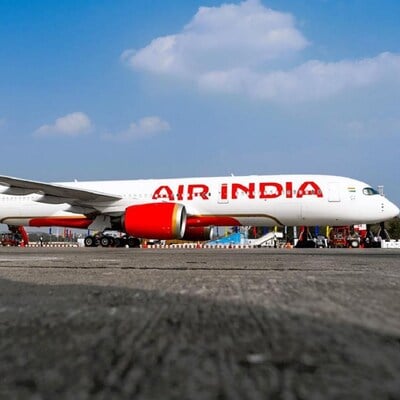Air India plans to double international transit traffic in 5-10 yrs: CCTO
Air India plans to double the share of international transit traffic in its total international traffic from the current four per cent to about 10 per cent within the next 5-10 years, as part of its strategy to make three major Indian airports—Delhi, Mumbai, and Bengaluru—key transit hubs, its Chief Commercial and Transformation Officer (CCTO) Nipun Aggarwal stated on Thursday.
According to aviation analytics firm Cirium, the share of transit traffic in Air India’s total international traffic surged from 2.84 per cent in February 2023 to 5.2 per cent in February 2024. International transit traffic refers to passengers who pass through a country en route to their final destination in another country.
“We see this three-hub strategy working quite nicely for us in the future. Delhi would be our principal hub, which will enable D-to-I (domestic to international) and I-to-I (international-to-international) connectivity globally. Mumbai will be our secondary hub. And Bengaluru is our tertiary hub, primarily from the south of India,” Aggarwal stated at CAPA India Aviation Summit 2024.
“Today, the focus is more on D-to-I, which is only 25 million passengers annually, but the I-to-I opportunity is also quite sensible. That itself is 14 million passengers annually. We had only 0.5 per cent of that. The little bit of work we have done in the last 24 months has given us a lot of hope because if you look at I-to-I traffic on our Air India network, it has moved from 0.5 per cent to 4 per cent,” he added.
The situation is even better at the Delhi airport. The current share of international transit traffic in the total international traffic of Air India at the Delhi airport is about 10 per cent, he mentioned. “On European flights, we are getting almost 20 per cent I-to-I traffic,” he added.
The number of international passengers on Indian carriers passing through six major Indian airports—Delhi, Mumbai, Kolkata, Chennai, Bengaluru, and Hyderabad—to reach their final destinations increased by 97.09 per cent year-on-year (Y-o-Y) to 68,305 in February, according to aviation analytics firm Cirium’s data reviewed by Business Standard. Dhaka, Kathmandu, Colombo, Bangkok, Singapore, and Dubai are the top six final destinations for these transit passengers.
Aggarwal said, “Air India is aiming to grow the share of transit traffic to about 10 per cent in India from the current four per cent in the next 5-10 years.” He stated that if Air India is able to capture that extra 5-6 per cent share, it would have to deploy 30 widebody planes just to cater to it, which indicates a huge growth opportunity.
“And with the two-way connectivity that we would be creating for traffic flow from east of India to the west of India, we feel we are in a good position to capitalise on that,” he mentioned.
He said the major Indian airports such as Delhi and Mumbai currently do not have the funds that are needed to develop them as hubs as they are “burdened” with heavy revenue-sharing agreements with the government.
Therefore, some “out of the box thinking” would be needed to arrange these funds and develop these airports as hubs as currently. The customer experience at these airports is not up to the level of major hubs in the Middle East such as Doha and Dubai.
He said Air India is quite happy that IndiGo is now adding widebody planes to its fleet as the demand for long-haul and ultra long-haul traffic from India is so high that “we are barely scratching the surface”.
First Published: Jun 06 2024 | 7:41 PM IST
